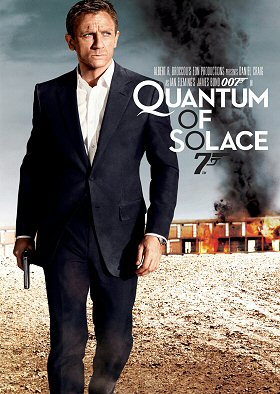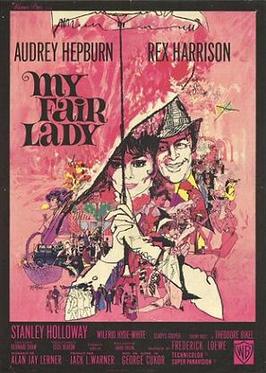A Study in How Not to do 'Holmes' on the Big Screen
 - Quite a bit of variety exists within the plethora of screen versions of Arthur Conan Doyle's Sherlock Holmes stories since the early years of film. The 21st Century viewer in particular does not need to look too long to recognize this fact with three very different modern Sherlock Holmes screen franchises in progress. So, for this reason, it feels strange to slam one particular 30s Sherlock Holmes feature for what I consider severely lacking in anything resembling a Sherlock Holmes adventure. But slam it I will.
- Quite a bit of variety exists within the plethora of screen versions of Arthur Conan Doyle's Sherlock Holmes stories since the early years of film. The 21st Century viewer in particular does not need to look too long to recognize this fact with three very different modern Sherlock Holmes screen franchises in progress. So, for this reason, it feels strange to slam one particular 30s Sherlock Holmes feature for what I consider severely lacking in anything resembling a Sherlock Holmes adventure. But slam it I will.The 1933 film A Study in Scarlet looks on paper to be a worthwhile Sherlock Holmes film. The title derrives from the first Sherlock Holmes novel, cinematographer Arthur Edeson was a fixture in Hollywood (shooting such classics as All Quiet on the Western Front (1930), Frankenstein (1931) and Casablanca (1942)) and major film and Broadway star Reginald Owen plays the legendary consulting detective. Unfortunately this 1933 Holmes adaptation offers little in the way of interest or entertainment value.
A Study in Scarlet is practically a non-Holmes Sherlock Holmes film, featuring everything but anything associated with a good Holmes tale. No mystery can be found since the film almost immediately alerts the viewer to who the bad guy is (for the most part), very little visual style can be seen since director Edwin L. Martin (A Christmas Carol (1938)) and cinematographer Edeson employ mostly medium straight-on shots throughout the entire film and, as a result of both of these Sherlockian anomalies, little atmosphere can be felt at all.
The cast offers no solace from the weak atmosphere. Alan Dinehart and Ana May Wong both overact terribly and Warburton Gamble is easily one of the finalists for the most pointless screen Watson in history. As Sherlock Holmes, Reginald Owen is clearly the standout within the cast as one of the few actors with any sort of screen presence but does not create an interesting character. Outside of reaching for a violin once or twice through the film, Owen does not even let on to the fact that he is playing the iconic Sherlock Holmes with his flat and dry performance of a character that is often described as an eccentric. The only thing that begins to designate Reginald Owen as a standout among the many actors to play Holmes is his double chin. Yes, that's right, Owen is easily the fattest actor ever to play Holmes; a flat, fat Holmes.
Plot-wise, the film uses little to no material from the notable Doyle story from which its title derives. However, to be fair, the film states upfront that the story is "suggested by the book by A. Conan Doyle" and not necessarily a purposeful adaptation (suggesting to me that the rights to the title was purchased but not the actual story). Holmes and Watson are introduced to one another in Doyle's novel A Study in Scarlet, offering a lot of substantial character exposition/development; however, the 1933 film sees Holmes and Watson as established sleuthing partners and does not take much time to dig into the characters, let alone focus on them at all. The novel also features a murder-mystery based around a love story, Native Americans and Mormonism while the 1933 film sees a much more conventional murder-mystery that borrows more from Agatha Christie's And Then There Were None than any other literary source. Perhaps the most curious aspect of the film is the choice to set Holmes and Watson's residence at 221A Baker Street instead of their well-known 221B address. Was this done on purpose or were the filmmakers really that clueless about the franchise they were so effortlessly attempting to profit from?
I recognize that I am slamming a Sherlock Holmes film for not being "Sherlockian" enough. Let me be clear: I enjoy the variety of Sherlock Holmes adaptations for both the big and small screens. But it is one thing to take the 100-year+-old characters in a completely different but interesting/clever direction, which many screen versions have done, and quite another to take Doyle's brilliant world and reduce it to banality. The 1933 A Study in Scarlet is an example of the latter.
I cannot recommend this film to anyone except fellow Holmes enthusiasts trying to take in all of the screen adaptations they can before the big sleep. Many more Sherlock Holmes screen stories exist as options for those looking for a worthwhile viewing experience and most of these at the very least offer something recognizably Sherlockian. Meanwhile, no mystery, no atmosphere, no style, no nods to Doyle and no focus on characters can be found in this movie. Perhaps the answer to why 1933's A Study in Scarlet has Holmes and Watson living at 221A Baker Street (instead of 221B) is simple, elementary even: clearly this is not the Holmes and Watson that Arthur Conan Doyle created.
CBC Rating: 4/10



+Original.jpg)



